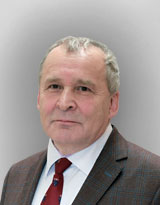Архив журнала
ЯЗЫК СОВЕТСКОЙ ДЕЙСТВИТЕЛЬНОСТИ: СЕМАНТИКА ПОЗИТИВА В ОБОЗНАЧЕНИИ ЛИЦ (2)
- 730
- Файл статьи: PDF
Аннотация: Статья содержит дальнейшую
разработку фрагмента системной модели, лежащей
в основе советского образа и представления действительности в отношении позитивных признаков
человека. Основу модели составляют параметры,
выводимые из значений слов и словоупотреблений,
характерных для языка советского времени. Описываемая модель показана в действии и отражениях
для семантики слов, называющих человека с точки
зрения необходимых советской системе и в нем продуцируемых свойств. В своей семантике и отношении к месту в модели описываются слова богатырь,
орел, сокол, орленок, Катюша, преобразователь,
рыцарь (революции), вождь, светоч, факел и др.
Представленная как многоуровневая система может служить примером идеологических и политических (пропагандистских, манипулятивных) вербально-концептуальных и смысловых построений
Ключевые слова: язык советской действительности, обозначения лиц, семантика позитива, советская языковая картина мира, язык и идеология,
парадигматическая модель описания
Abstract: The article contains a subsequent development of a fragment of system model underlying the
Soviet image and representation of reality concerning
the positive attributes of man. The basis of model is
made with parameters deduced from the meanings of
words and word usages characteristic for language of
the Soviet time. The described model is shown in operation and in its reflections for semantics of words naming
man from the point of view of necessary to the Soviet
system properties and the properties produced in him.
The words bogatyr (athlete), orel (eagle), sokol (falcon),
orlenok (eaglet), Katyusha, preobrazovatel’ (reformer),
rytsar’ revolutsii (knight of the revolution), vozhd’
(chief), svetoch (light), fakel (torch) and so on are described in their semantics and position in the model. Introduced as a multilevel one, the system can serve as an
example of ideological and political (of propaganda,
manipilation) verbal-conceptual and semantic constructions (paradigms)
Key words: language of the Soviet reality, designation of persons, semantics of a positive Soviet language
world picture, language and ideology, paradigmatic
model of description


